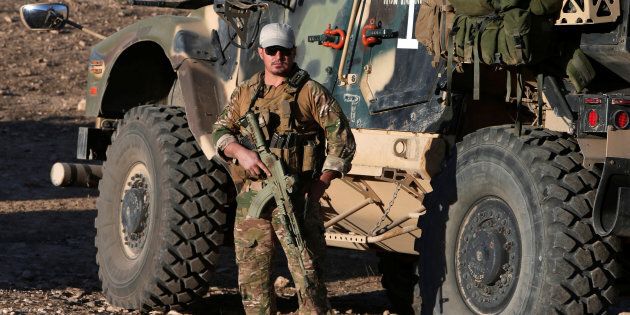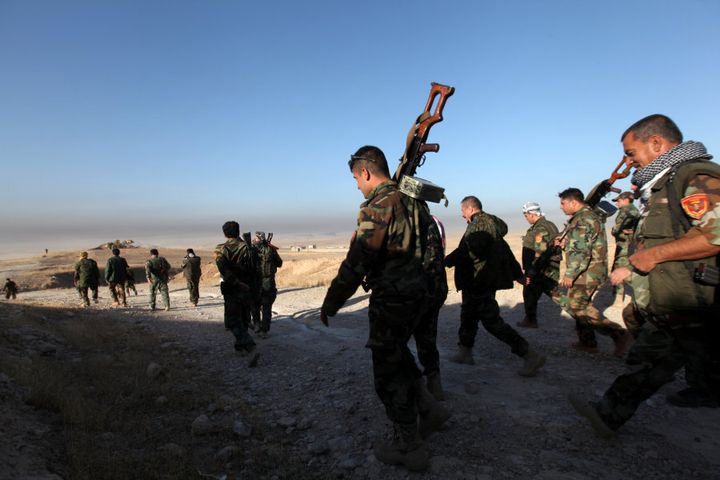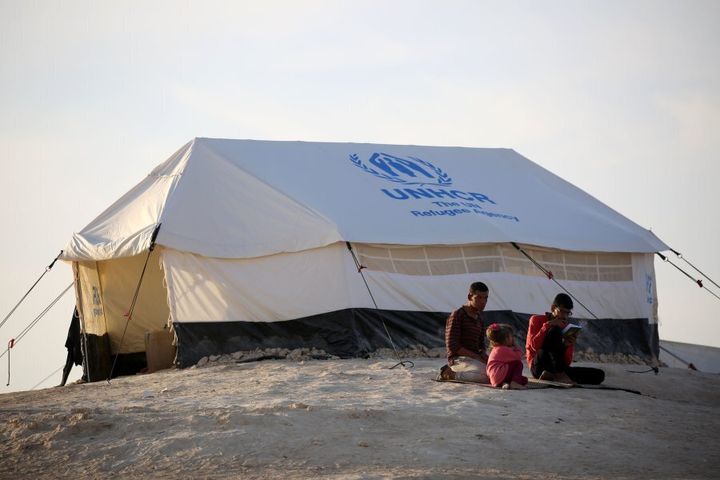
The ISIS held Iraqi city of Mosul is under attack from Iraqi and Kurdish forces, with the Pentagon declaring the first day of the long awaited battle to retake the terror group's stronghold is ahead of schedule.
Coalition forces began their push towards what was once Iraq's second largest city on Monday, more than two years after it was taken by ISIS and chosen by the terror group's leader, Abu Bakr al-Baghdadi, as the place to announce a caliphate.
A force of 30,000 Iraqi and Kurdish Peshmerga forces -- backed by air and ground support from a 60-nation US-led coalition, which includes Australia -- are pushing towards Mosul, where between 4,000 and 8,000 IS fighters are believed to remain.
So far the fighting has been limited to villages surrounding the city, where advancing Kurdish Peshmerga forces were met with car bomb attacks and sporadic battles with IS supporters. The group has reportedly surrounded nine village in the area ahead of the Iraqi Army's attack on the city.

Why Mosul, and why now?
The hour has come and the moment of great victory is near Iraq's prime minister Haider al-Abadi
Islamic State routed the Iraqi Army in June of 2014, taking Mosul after four days of clashes that eventually saw Iraqi forces flee.
It's estimated 30,000 Iraqi soldiers ran from as few as 800 IS soldiers. In the aftermath, IS had acquired a major economic (it's an oil rich region) and political stronghold, as well as U.S. weaponry.
"It's a very significant city, it'd be like if Adelaide was under IS control," said Mat Hardy, a senior lecturer in Middle East studies at Deakin University.
So what's changed between June 2014 and now? Quite a lot, Hardy told the Huffington Post Australia.
He said that over the two year period the Iraq army had retrained, while the government made efforts to form alliances with with disparate groups in Iraq.

Iraq has been steadily reorganising and training its military with help from Coalition forces, including the U.S., Australia and Italy.
That help also includes Coalition airstrikes during the upcoming battle.
What we say in the training room... is make them better than DaeshCol. Andrew Lowe, Australian Army
"When you have four weeks of training, its important to keep in the back of our minds we're not training them to be like us," Australian Army Colonel Andrew Lowe told U.S. network PBS in the lead up to the battle.
"We're training them to be what they need to be to defeat Daesh."
Operation OKRA and Task Group Taji
- Operation OKRA is the Australian Defence Force's contribution to the international effort to combat the Daesh terrorist group in Iraq and Syria.
- Task Force Taji, the combined Australian-New Zealand training unit is training around 3,000 Iraqi soldiers a month at the Taji Military Complex.
- More than 30,000 Iraqi Security Forces have been trained by combined Coalition forces across Iraq, and have been supported by Coalition airstrikes.
- Before the Battle for Mosul, ISF and Peshmerga Forces held more than 50 percent of the territory ISIS once claimed including Qayyarah, Makhmur, Rutbah and other towns in the surrounding Mosul area.
Source: ADF
The current force marching towards Mosul from five directions also includes paramilitary forces made up of Sunni tribal fighters and Shia militias.
It's a recipe for tension, said Hardy.
"A lot of the garnering of support for this offensive has been more a matter of getting the Sunni tribal chieftains on board, in this region," he said.
"Many of those, if not throwing their lot in with ISIS, had tacitly allowed them passage or lack of resistance."

Hardy also sees potential tensions with the Kurdish Peshmerga forces, who were persecuted under the regime of Saddam Hussein.
"In a sense the Kurds are actually fighting for territory that was once theirs, so do they get to keep what they capture," Hardy asked.
"We're kind of having a bob each way. In one way we're saying we support a strong Iraqi central government, but on the other hand we're supporting an autonomous aspect of Iraqi society as well."
What to expect
The high times of ISIS seem to be behind usDr Gil Merom
Sydney University International Security expert, Dr Gil Merom, told HuffPost Australia he suspected ISIS moral was low, with the terrorist group having lost territory in Iraq and Syria over the past year.
"My hunch — and it must be a hunch — is probably both parties tried to learn as much as they could from the battle for Fallujah," Dr Merom said.
"The timeline suggests that probably ISIL moral in Mosul, after the recent year and half of battles — and pressure put on it daily — all of it suggests that opposition within the city might be weaker than before."
He said there was potential for resistance in the form of suicide attacks in the hard-to-fight-in urban environment.
But he said the Coalition forces had also learned lessons since Fallujah.
"On the comparative measure, it will be less of challenge than Fallujah. It will be bigger, absolutely, but in comparative, relative terms, it will be less than expected," Dr Merom said.
It will be bloody, but not as bloody as what took place two years ago.Dr Gil Merom
The United Nations and humanitarian groups hold grave fears for the 1.5 million civilians in Mosul.
On Monday, the U.N. warned more than a million residents might try to get out before the fighting starts and become used by ISIS as "human shields."

"Already, the operation is so large [that] we're struggling to reach people who need help," U.N. resident and humanitarian coordinator for Iraq, Lise Grande, told NBC.
"There isn't an organisation in the world that can handle population movement of more than 150,000 people at one time."
Mosul Humanitarian Response
According to the OHCA, in a worst case scenario the humanitarian operation in Mosul is likely to be the single largest and most complex in the world in 2016.
- 1.5 Million -- Women, men, girls and boys who may be impacted by the Military campaign.
- 200,000 -- people expected to be displaced
- 60,000 -- available individual spaces in emergency sites and camps
- 250,000 -- number of spaces under construction or planned
- 60,000 -- family sized tents in the country
- 92,000 -- emegency shelter kits on their way
- 220,000 -- ready-to-eat food rations for 220,000 families ready for distribution
- 63,000 -- winter kits ready for distribution
- 143,000 -- household kits including mattresses, blankets and stoves
- 240 tons -- medicines ready for distribution
World Vision Australia chief executive Tim Costello said the agency was preparing for the possibility the offensive could become the largest global humanitarian operation of 2016.
"The military attack on Mosul has been planned for many months, but we are hearing a lot less about preparations for the humanitarian consequences of the offensive, which are likely to be terrible," Costello said in a statement.
"We know that in times of emergency at least half of those affected will be children. The children of Mosul must not be sacrificed in the taking of Mosul."
Oxfam said the Iraqi Government had identified locations for five sites where men and boys over the age of 13 will be screened to ensure they are not ISIS fighters.
But the aid group said it is concerned the screening process will create bottlenecks that could result in civilians getting caught up in the conflict and having to wait for long periods in the open.
Military operations along the Mosul Corridor had already displaced almost 150,000 people since March 2016, Oxfam said.